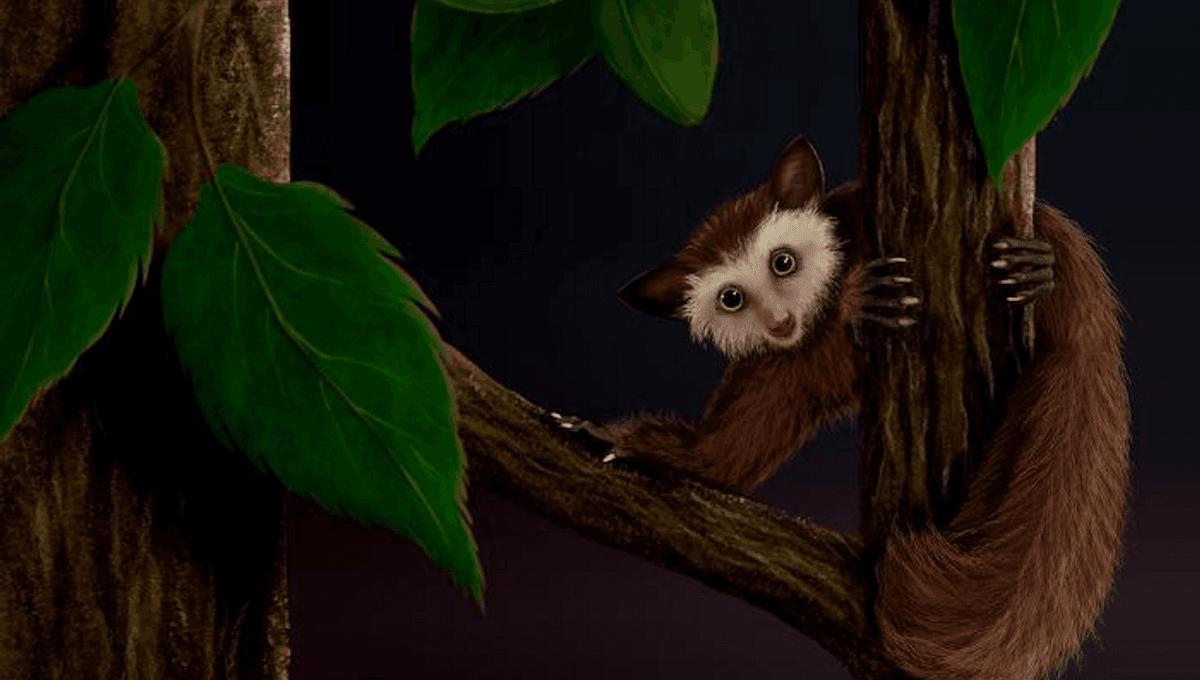
The family tree of the last primate to inhabit North America before human arrival has been revealed, thanks to a comparison of teeth and jaws half a world apart.
Humans have a lamentable history of leaving extinction behind when we reach new lands, North America included. However, at least in that case, we don’t have any members of our own order on our conscience. It’s not, however, as one might guess, because no primates ever made it to North America, but rather because those that did died out an exceptionally long time ago.
After their epic journey(s) to South America, monkeys made it across Darien Gap and have thrived in the rainforests of Panama and Costa Rica. However, the climate of northern Mexico was less welcoming for them, and as far as we can tell they never established a presence in what is now the United States. Long beforehand, however, a previous primate made North America’s forests its home, named Ekgmowechashala from the Sioux words for “little cat man”. New research helps explain its origins.
Ekgmowechashala was indeed little, probably weighing just over 2 kilograms (5 pounds). Initially known from the teeth of just one species found in what are now the great plains, Ekgmowechashala is thought to have occupied a niche a little like raccoons. At least, like raccoons before humans’ garbage cans opened up a whole new world of opportunities. A related species has now been found in Oregon.
None of this helped fit the little creatures into the wider primate family tree, however. That is until the discovery of Palaeohodites, which is a Chinese fossil whose name means “ancient wanderer”, not a much-hyped diet.
According to University of Kansas doctoral student Kathleen Rust, Palaehodites is a sister species of Ekgmowechashala and reveals both evolved as part of an expansion from South Asia.
“Due to [Ekgmowechashala’s] unique morphology and its representation only by dental remains, its place on the mammalian evolutionary tree has been a subject of contention and debate,” Rust said in a statement.
“There’s been a prevailing consensus leaning towards its classification as a primate. But the timing and appearance of this primate in the North American fossil record are quite unusual. It appears suddenly in the fossil record of the Great Plains more than 4 million years after the extinction of all other North American primates, which occurred around 34 million years ago.”
The first Palaehodites bones were collected by Rust’s doctoral advisor Professor Chris Beard in Guangxi, China. Although it has taken almost 30 years from Beard’s discovery to the publication of research revealing the two primates’ relationship, Beard says he could see the connection as soon as he found the first Palaehodites jaw.
“Literally as soon as I picked up the jaw and saw it, I thought, ‘Wow, this is it,’” Beard said. “It’s not like it took a long time, and we had to undertake all kinds of detailed analysis — we knew what it was.” Proving it to the rest of the world took longer, but Rust and Beard believe the similarity between the upper molar he found and the oldest Ekgmowechashala specimen, which happens to be held at Kansas University, will do.
Rust and Beard argue that Ekgmowechashala’s ancestors crossed the Bering Strait millions of years before humans did, settling in the primate-free forests of the Rocky Mountains. The pair think this occurred during a relatively brief cold snap that created a landbridge, although what a rainforest-loving creature was doing making such an icy journey remains unclear.
In the early Miocene, when Ekgmowechashala was doing so well, North America was a warmer and wetter place, providing it with rainforests we would now think of as tropical, As the world cooled, the landscape changed and there was no longer a place for it so far north.
The first primates reached North America 56 million years ago, not long after they evolved. After around 20 million years of diversification, an earlier bout of cold, dry weather wiped them out as well, but some had proposed Ekgmowechashala was a survivor that somehow made it through, rather than an immigrant.
The study is published open access in the Journal of Human Evolution.
Source Link: Origins Of Last Pre-Human Primate To Inhabit North America Explained